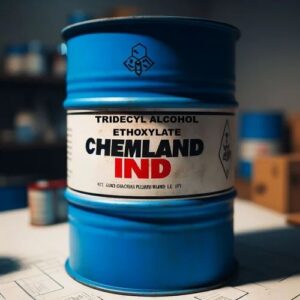Tridecyl Alcohol Ethoxylate: Product Description and Uses
Product Description
Tridecyl Alcohol Ethoxylate is a non-ionic surfactant derived from the ethoxylation of tridecyl alcohol. It is characterized by its excellent emulsifying, wetting, and dispersing properties, making it a versatile ingredient in various industrial and consumer applications. This compound is typically a clear to slightly yellow liquid with a mild odor, and it is soluble in water and many organic solvents. Tridecyl Alcohol Ethoxylate is known for its low toxicity and biodegradability, making it an environmentally friendly choice for formulations.
Uses
Tridecyl Alcohol Ethoxylate is widely used in several industries, including:
- Household Cleaning Products: Acts as a surfactant in detergents and cleaners, enhancing cleaning efficiency.
- Personal Care Products: Used in shampoos, conditioners, and lotions for its emulsifying properties.
- Agricultural Formulations: Serves as a wetting agent in pesticide formulations, improving the spread and adhesion of active ingredients.
- Textile Industry: Employed as a wetting agent and emulsifier in textile processing.
- Paints and Coatings: Functions as a dispersant and stabilizer in paint formulations.
Technical Data
| Property | Value |
|---|---|
| Chemical Name | Tridecyl Alcohol Ethoxylate |
| CAS Number | 160875-66-1 |
| Molecular Weight | Varies with ethoxylation degree |
| Appearance | Clear to slightly yellow liquid |
| Odor | Mild |
| Solubility | Soluble in water and organic solvents |
| pH (1% solution) | 6.0 – 8.0 |
| Flash Point | > 100 °C |
| Density | 0.9 – 1.0 g/cm³ |
| Biodegradability | Biodegradable |
| Toxicity | Low toxicity |
Key Features
- Non-ionic: Suitable for a wide range of applications without the risk of ionic interactions.
- Versatile: Effective in various formulations across multiple industries.
- Environmentally Friendly: Biodegradable and low toxicity profile.
Conclusion
Tridecyl Alcohol Ethoxylate is a highly effective surfactant with a broad range of applications in cleaning, personal care, agriculture, textiles, and coatings. Its favorable properties make it a valuable ingredient for formulators seeking performance and environmental sustainability.

